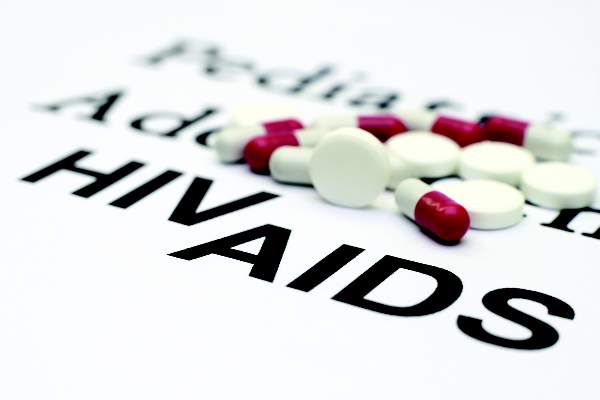User login
A large volume of HIV and AIDS research enters the medical literature every month. It can be difficult to monitor everything, so here’s a quick look at some notable news items and journal articles published over the past few weeks.
Emotion dysregulation in people with HIV/AIDS may interact with HIV symptom severity to negatively impact certain aspects of quality of life, according to a study in AIDS Care.
Concurrent multitype HPV infection is common in HIV-seropositive women and frequency rises as CD4 count declines, a recent study revealed, but multitype infection does not increase precancer risk.
A study published in HIV Clinical Trials found an association between increased homocysteine plasma level and shortened prothrombin time in HIV-infected patients.
Lower levels of gamma-linolenic acid are associated with lower CD4 counts in HIV patients and an increased risk of death or hospitalization, a recent study revealed. The authors said the results suggest a potential for using n6-fatty acids to improve outcomes from antiretroviral therapy.
A recent study found that the early spread of HIV virus from blood plasma to genital tract, and the complex viral interplay between these compartments, suggests that viral eradication efforts will require monitoring viral subpopulations in anatomic sites and viral trafficking during the course of infection.
A study of aviremic HIV-2–infected individuals in Guinea-Bissau revealed that increased frequencies of CD4+ T cells with an activated/exhausted phenotype correlate with exacerbated immunodeficiency.
Treatment interventions to curb the hepatitis C virus epidemic among HIV-infected men who have sex with men could be effective if high-risk behavior does not increase as it has during the last decade, according to a study in Hepatology.
A German study found that short treatment with 8 weeks of sofosbuvir and ledipasvir seems highly effective and safe in selected hepatitis C virus mono- and HIV-HCV–coinfected patients in a real-world setting.
A study of antiretroviral treatment in Swaziland found the attrition rate to be 10.3% in 16,423 participants that initiated ART in 2012.
Mycobacterium tuberculosis in HIV-infected patients had lower expression of the DosR regulon genes, a critical metabolic and immunomodulatory switch induced by nitric oxide, carbon monoxide, and hypoxia, according to a study in the Journal of Infectious Diseases.
The influence of the Affordable Care Act on insurance coverage for HIV patients and other factors affecting HIV care likely varies by jurisdiction, reported a study in AIDS Care.
A Danish study found that HIV-exposed uninfected children had an increased risk of overall hospital admission mainly due to observation/nonspecific diagnoses, not to infectious disease.
A recent study found that mobile technology is a promising approach to intervention delivery for both younger and older HIV-positive black men who have sex with men.
Interventions or programmatic decisions regarding preconception counseling methods for young women living with HIV are necessary and potentially transferable between populations, new research suggests.
A meta-analysis in HIV Medicine found that the life expectancy of HIV-positive people after starting combination antiretroviral therapy (cART) improved over time. The authors said monitoring life expectancy into the future is important to assess how changes to cART guidelines will affect patient long-term outcomes.
Involving people living with HIV/AIDS as patient instructors (PHA-PIs) reduced HIV-related stigma among medical students and increased comfort in providing HIV-related care, according to a study published in AIDS Care.
A recent study found a benefit of antidepressant treatment in people with HIV, depression, and alcohol use, and found no evidence that either alcohol use or illicit drug use moderates the antidepressant treatment response.
It is possible to successfully integrate a patient retention protocol into the existing infrastructure of an HIV clinic and reengage a majority of out-of-care patients into medical care, according to investigators in North Carolina.
On Twitter @richpizzi
A large volume of HIV and AIDS research enters the medical literature every month. It can be difficult to monitor everything, so here’s a quick look at some notable news items and journal articles published over the past few weeks.
Emotion dysregulation in people with HIV/AIDS may interact with HIV symptom severity to negatively impact certain aspects of quality of life, according to a study in AIDS Care.
Concurrent multitype HPV infection is common in HIV-seropositive women and frequency rises as CD4 count declines, a recent study revealed, but multitype infection does not increase precancer risk.
A study published in HIV Clinical Trials found an association between increased homocysteine plasma level and shortened prothrombin time in HIV-infected patients.
Lower levels of gamma-linolenic acid are associated with lower CD4 counts in HIV patients and an increased risk of death or hospitalization, a recent study revealed. The authors said the results suggest a potential for using n6-fatty acids to improve outcomes from antiretroviral therapy.
A recent study found that the early spread of HIV virus from blood plasma to genital tract, and the complex viral interplay between these compartments, suggests that viral eradication efforts will require monitoring viral subpopulations in anatomic sites and viral trafficking during the course of infection.
A study of aviremic HIV-2–infected individuals in Guinea-Bissau revealed that increased frequencies of CD4+ T cells with an activated/exhausted phenotype correlate with exacerbated immunodeficiency.
Treatment interventions to curb the hepatitis C virus epidemic among HIV-infected men who have sex with men could be effective if high-risk behavior does not increase as it has during the last decade, according to a study in Hepatology.
A German study found that short treatment with 8 weeks of sofosbuvir and ledipasvir seems highly effective and safe in selected hepatitis C virus mono- and HIV-HCV–coinfected patients in a real-world setting.
A study of antiretroviral treatment in Swaziland found the attrition rate to be 10.3% in 16,423 participants that initiated ART in 2012.
Mycobacterium tuberculosis in HIV-infected patients had lower expression of the DosR regulon genes, a critical metabolic and immunomodulatory switch induced by nitric oxide, carbon monoxide, and hypoxia, according to a study in the Journal of Infectious Diseases.
The influence of the Affordable Care Act on insurance coverage for HIV patients and other factors affecting HIV care likely varies by jurisdiction, reported a study in AIDS Care.
A Danish study found that HIV-exposed uninfected children had an increased risk of overall hospital admission mainly due to observation/nonspecific diagnoses, not to infectious disease.
A recent study found that mobile technology is a promising approach to intervention delivery for both younger and older HIV-positive black men who have sex with men.
Interventions or programmatic decisions regarding preconception counseling methods for young women living with HIV are necessary and potentially transferable between populations, new research suggests.
A meta-analysis in HIV Medicine found that the life expectancy of HIV-positive people after starting combination antiretroviral therapy (cART) improved over time. The authors said monitoring life expectancy into the future is important to assess how changes to cART guidelines will affect patient long-term outcomes.
Involving people living with HIV/AIDS as patient instructors (PHA-PIs) reduced HIV-related stigma among medical students and increased comfort in providing HIV-related care, according to a study published in AIDS Care.
A recent study found a benefit of antidepressant treatment in people with HIV, depression, and alcohol use, and found no evidence that either alcohol use or illicit drug use moderates the antidepressant treatment response.
It is possible to successfully integrate a patient retention protocol into the existing infrastructure of an HIV clinic and reengage a majority of out-of-care patients into medical care, according to investigators in North Carolina.
On Twitter @richpizzi
A large volume of HIV and AIDS research enters the medical literature every month. It can be difficult to monitor everything, so here’s a quick look at some notable news items and journal articles published over the past few weeks.
Emotion dysregulation in people with HIV/AIDS may interact with HIV symptom severity to negatively impact certain aspects of quality of life, according to a study in AIDS Care.
Concurrent multitype HPV infection is common in HIV-seropositive women and frequency rises as CD4 count declines, a recent study revealed, but multitype infection does not increase precancer risk.
A study published in HIV Clinical Trials found an association between increased homocysteine plasma level and shortened prothrombin time in HIV-infected patients.
Lower levels of gamma-linolenic acid are associated with lower CD4 counts in HIV patients and an increased risk of death or hospitalization, a recent study revealed. The authors said the results suggest a potential for using n6-fatty acids to improve outcomes from antiretroviral therapy.
A recent study found that the early spread of HIV virus from blood plasma to genital tract, and the complex viral interplay between these compartments, suggests that viral eradication efforts will require monitoring viral subpopulations in anatomic sites and viral trafficking during the course of infection.
A study of aviremic HIV-2–infected individuals in Guinea-Bissau revealed that increased frequencies of CD4+ T cells with an activated/exhausted phenotype correlate with exacerbated immunodeficiency.
Treatment interventions to curb the hepatitis C virus epidemic among HIV-infected men who have sex with men could be effective if high-risk behavior does not increase as it has during the last decade, according to a study in Hepatology.
A German study found that short treatment with 8 weeks of sofosbuvir and ledipasvir seems highly effective and safe in selected hepatitis C virus mono- and HIV-HCV–coinfected patients in a real-world setting.
A study of antiretroviral treatment in Swaziland found the attrition rate to be 10.3% in 16,423 participants that initiated ART in 2012.
Mycobacterium tuberculosis in HIV-infected patients had lower expression of the DosR regulon genes, a critical metabolic and immunomodulatory switch induced by nitric oxide, carbon monoxide, and hypoxia, according to a study in the Journal of Infectious Diseases.
The influence of the Affordable Care Act on insurance coverage for HIV patients and other factors affecting HIV care likely varies by jurisdiction, reported a study in AIDS Care.
A Danish study found that HIV-exposed uninfected children had an increased risk of overall hospital admission mainly due to observation/nonspecific diagnoses, not to infectious disease.
A recent study found that mobile technology is a promising approach to intervention delivery for both younger and older HIV-positive black men who have sex with men.
Interventions or programmatic decisions regarding preconception counseling methods for young women living with HIV are necessary and potentially transferable between populations, new research suggests.
A meta-analysis in HIV Medicine found that the life expectancy of HIV-positive people after starting combination antiretroviral therapy (cART) improved over time. The authors said monitoring life expectancy into the future is important to assess how changes to cART guidelines will affect patient long-term outcomes.
Involving people living with HIV/AIDS as patient instructors (PHA-PIs) reduced HIV-related stigma among medical students and increased comfort in providing HIV-related care, according to a study published in AIDS Care.
A recent study found a benefit of antidepressant treatment in people with HIV, depression, and alcohol use, and found no evidence that either alcohol use or illicit drug use moderates the antidepressant treatment response.
It is possible to successfully integrate a patient retention protocol into the existing infrastructure of an HIV clinic and reengage a majority of out-of-care patients into medical care, according to investigators in North Carolina.
On Twitter @richpizzi

